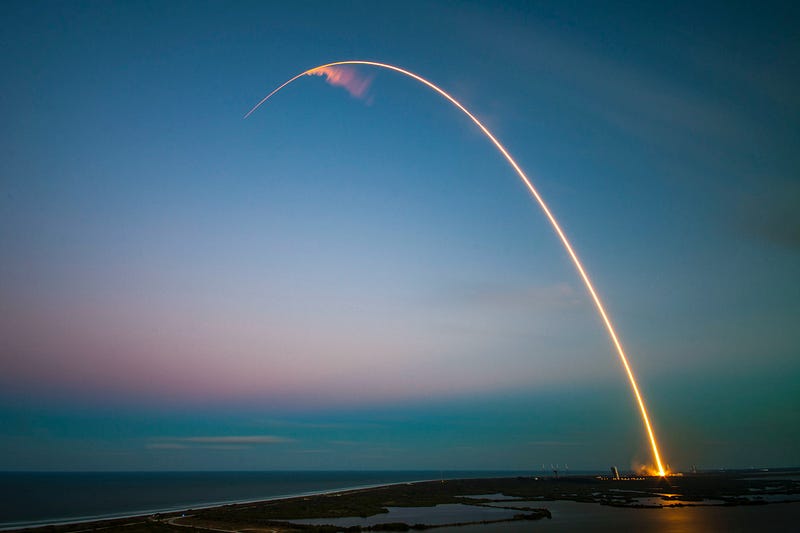Next Destination: Mars! Exploring the New Space Race
Written on
Chapter 1: Moon Missions and the Rise of Space Exploration
On August 23, the Indian Space Research Organisation (ISRO) marked a significant milestone by becoming the fourth national space agency to successfully land on the moon, joining the ranks of Russia, the United States, and China. The Chandrayaan-3 mission saw the Vikram lander deploy the Pragyan rover in the southern polar region of the moon. However, the competition in space is intensifying, with countries like China, the US, the UAE, and private entities led by Elon Musk setting their sights on more ambitious targets beyond our lunar neighbor.
Section 1.1: Lunar Landings - A Renewed Interest
Landing on the moon presents considerable challenges and costs. NASA has not achieved a lunar landing since Apollo 17 in 1972, and Russia last landed a craft there in 1976. Recently, both nations have rekindled their lunar ambitions as other countries have successfully reached the moon or made plans to do so.
In 2013, China became the third nation to land on the moon with its Yutu rover, and it subsequently made history in 2019 by landing on the moon's far side. By 2030, China aims to send astronauts to the moon and establish a research facility with assistance from Russia. Following a 52-year hiatus, NASA plans to return astronauts to the lunar surface by 2025 via its Artemis program, utilizing the new Space Launch System rocket and collaborating with private firms SpaceX and Blue Origin for lunar landers. Additionally, a private Israeli firm, SpaceIL, is set to launch Beresheet 2 to the moon in 2025.
In a twist of fate, during the same week that India celebrated its lunar achievement, Russia's Luna 25 mission ended in failure, crashing in the vicinity of its intended landing site—a significant setback for Russia's space endeavors since its last successful mission in 1976.
Section 1.2: Mars - The Ultimate Destination
Interest in lunar exploration has surged in recent years, yet many view it as a stepping stone toward future manned missions to Mars. The number of Mars missions has been increasing, showcasing a variety of international efforts.
NASA's first successful Mars mission occurred in 1962 with a flyby, followed by the Soviets landing a craft in 1971, although contact was lost shortly after. NASA's Viking 2 successfully landed in 1975, and it wasn't until 1996 that the agency returned to the Martian landscape with the Pathfinder lander and Sojourner rover. The European Space Agency (ESA) launched a successful orbiter in 2003 but faced failure with its Beagle 2 lander. In contrast, India made a notable achievement with its Mangalyaan orbiter in 2013, while China's Tianwen-1 orbiter reached Mars orbit in 2021, accompanied by the UAE’s Hope orbiter. Tianwen-1 also successfully deployed the Zhurong rover in May 2021.
Japan plans to send a mission to collect samples from Phobos, one of Mars' moons, in 2024, while NASA and ESA are working on returning Martian samples to Earth in the 2030s. While lunar missions garner prestige, they may soon be overshadowed by the more ambitious endeavors aimed at the red planet. Currently, nations are focusing on scientific exploration of Mars, but the US, China, India, and others have expressed intentions to send humans to Mars, with lunar missions serving as a crucial precursor.
Chapter 2: The Vision for Colonizing Mars
Unlike other celestial bodies, Mars possesses characteristics that could potentially support human life. Its distance from the sun allows for favorable sunlight conditions, surface temperatures are manageable, and the gravity is approximately 38% that of Earth. Many believe the Martian atmosphere could be adapted for plant growth and, eventually, human respiration. Most importantly, water exists on the planet, which is essential for life.
SpaceX's latest innovation, the "Starship," is the largest rocket ever constructed and theoretically capable of transporting up to 100 people to Mars. Its Super Heavy booster can be refueled in low Earth orbit, and it boasts an impressive capacity of lifting up to 250 tons into low Earth orbit—significantly more than its closest competitor, the Falcon Heavy rocket. With its extraordinary lifting capability, Starship could facilitate the transport of habitation modules necessary for establishing colonies on both the moon and Mars.
Although Starship experienced an explosion during its first full launch in April, SpaceX is preparing for another test flight after addressing the corrective measures mandated by the US Federal Aviation Authority.
Conclusion: The Future of Space Exploration
The original space race not only propelled humanity into space and to the moon but also led to numerous technological advancements, from weather satellites to innovative materials like Teflon and memory foam. A renewed race to Mars will undoubtedly incur significant costs but promises similar technological breakthroughs. Even if nations struggle to justify manned missions to Mars, Elon Musk remains undeterred in his vision, provided he can keep his focus away from managing X (formerly Twitter).
